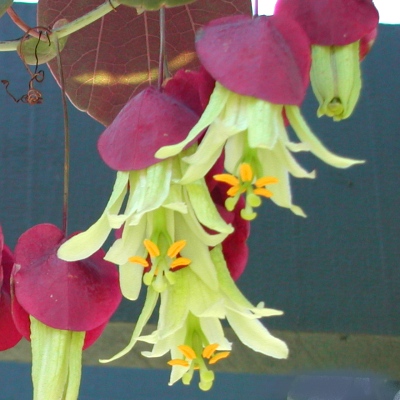Germinating the seeds
When to plant -- Plant your seeds right away for the best results. Getting started -- Soak the seeds for 12-24 hours in a cup of water. Soil -- Use a well-draining mix. A typical mix is 2 parts potting soil to 1 part perlite or coarse horticultural sand. An alternate mix is equal parts of perlite and coir fiber or peat moss, with some slow-release fertilizer mixed in. Do not add lime to the mix. Pot size - Use small pots or cups with drainage holes. Fill the pots with the soil mix and add water until evenly moist (but not soggy). Place a seed on top in each pot, and cover with about 1/4 inch (7 mm) of soil. Moisten the top soil layer. Until the seeds sprout, ensure that the surface soil doesn't dry out. If you place the pots in a plastic container or bag to maintain moisture, leave it open slightly to allow fresh air to enter. Temperature -- They germinate well between 64 and 77° F (18-25°C) . Avoid letting them get above 80° F (27°C), or below 58° F (14°C). I recommend placing a minimum/maximum thermometer near the pots. Place the pots out of direct sun. They usually begin sprouting in about 5 weeks, although sometimes they can take 8 weeks to start, especially if temperatures are not in the zone mentioned above. Lighting the seedlings -- Once they sprout, increase the air ventilation a bit, and move them to a bright spot, with protection from afternoon sun. You may use an LED or fluorescent light kept a few inches (10 cm) away while your plants are young. Watering: Once the seedlings are 3 weeks old, you may allow the surface soil to dry out, but aim to keep the rest of the soil evenly moist most of the time. Never let it dry out completely, but also don't keep it constantly soggy. Fertilizing -- The first
2 months, feed every 7 days with a small amount of dilute (1/8 strength) liquid
fertilizer.
Hydroponic fertilizer
is ideal for small seedlings, because it is easily absorbed and contains all essential
nutrients. After 2 months, you may switch to a granular fertilizer Growing onward... Climate -- It comes from the mountains of Guatemala where temperatures are mild all year and nights are cool. I don't have much information on its climate tolerances, but it is probably heat-sensitive and may not flower in temperatures above about 85 degrees F (30 degrees C), particularly if nights are warm. It might not thrive in consistently hot temperatures. I don't know its frost tolerance, but it probably can only handle a light frost. I would protect seedlings from frost the first 2 years. Over about 40% humidity is recommended. Lighting -- Gradually acclimate them to direct sun when they are about 2 months old. Avoid strong afternoon sun the first few months. Once they are 9-12 months old, transition them to full sun, or close to it. The plants require at least a few hours of sun in order to flower. Repotting -- Once your seedlings have at least 3 pairs of leaves, you may repot them to larger containers about 1 quart (1 liter) in size. Repot gently and avoid letting the soil ball break apart. Water the soil before repotting to keep the soil together. For the first week after repotting, shade from sun and give no fertilizer. Repot again after 4 to 6 months. The final pot size depends on how large you choose to let the vine grow, but it will probably need at least 25 gallons (100 liters). You may prune your plant to any size that is convenient. The vine can be trained along wires, a trellis, or an arbor. Mature shoots can grow over 50 feet long and can potentially smother plants if left unpruned. Pests to watch for -- spider mites (tiny "dots" under the leaves), snails & slugs. Watch for any other pests that affect your other plants. If you have any questions or problems, please contact me. Have fun growing them! - Jeff Strange Wonderful Things
|
|||||||||


